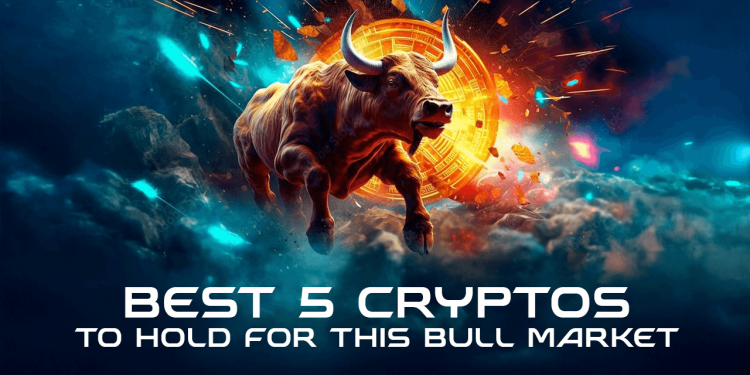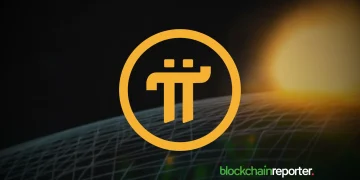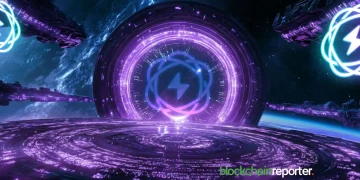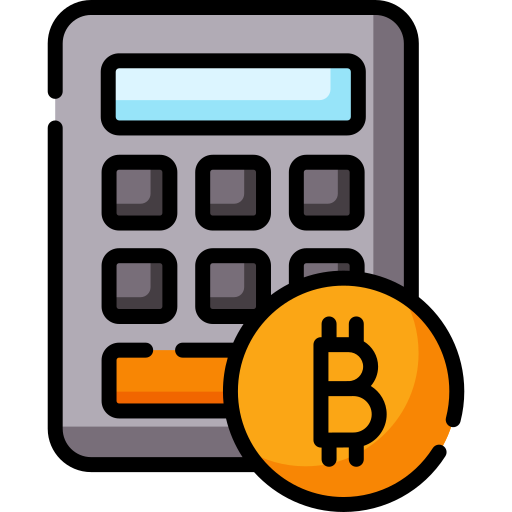Cryptocurrencies have moved beyond their initial hype into a technological revolution, with the rise of Layer 1 blockchains being the driving force behind many of the most exciting developments in the space. From tackling scalability issues to providing secure, decentralized environments for applications, these blockchains have become the foundation of the blockchain ecosystem. Today, we’ll dive deep into the top Layer 1 crypto projects, including Qubetics ($TICS), Solana, Cardano, Render, and Avalanche. Each of these has made significant strides in the crypto world, and some of them are poised to dominate the future.
Among these, Qubetics ($TICS) stands out as a game-changer. Its ongoing presale, which is in its 21st stage, has garnered tremendous attention. With more than 469 million tokens sold and $12.5 million raised, this is a crypto project that’s quickly making its mark. Analysts are predicting a 240.64% ROI by the end of the presale and a 20,338% ROI after the mainnet launch.
In this guide, we’ll explore each of these Layer 1 blockchains in-depth, examining the latest developments, market performance, and how each is tackling real-world challenges. Let’s jump in!
1. Qubetics ($TICS): The New Frontier of Layer 1 Blockchain
Qubetics is a Layer 1 blockchain that’s transforming the landscape of decentralized finance (DeFi), decentralized applications (dApps), and much more. What makes Qubetics so compelling is its ability to solve many of the challenges faced by its predecessors, such as scalability, transaction speed, and real-world usability.
Latest Developments:
As of now, Qubetics is in its 21st presale stage, with over 19,500 holders and 469 million tokens sold. The project has already raised $12.5 million, and the analysts’ projections for $TICS are incredibly bullish. The price of $0.0733 per token in the presale offers a great opportunity for investors, with a potential 240.64% ROI by the time the best crypto presale ends. Once the presale concludes and the mainnet is launched, the price could surge to $1, offering a 1262% ROI, or even reach $5, representing an impressive 6712% ROI.
Qubetics’ QubeQode IDE is another reason to get excited. This development tool helps developers easily build, test, and deploy dApps on the Qubetics blockchain, ensuring a seamless and efficient process for creating decentralized solutions. The applications of Qubetics aren’t just theoretical—they’re already being used in real-world scenarios.
Application of Qubetics and Its Relevance to Central Asia:
For example, let’s consider a tech startup in Kazakhstan that wants to create a decentralized lending platform for underserved regions. Using QubeQode IDE, developers could quickly deploy secure, scalable smart contracts on the Qubetics blockchain, cutting down on costs and providing financial services that are currently out of reach for many. Similarly, businesses in Uzbekistan could leverage the Qubetics blockchain to enable cross-border transactions, slashing fees and transaction times in the process.
Qubetics makes it to this list because it combines cutting-edge technology with real-world applications. Its blockchain solves issues of speed, scalability, and real-world utility—issues that have plagued other Layer 1 projects. As more businesses and developers begin to realize its potential, Qubetics is likely to see massive adoption.
2. Solana: The Speed Demon of Layer 1 Blockchain
Solana has built a reputation as one of the fastest Layer 1 blockchains on the market. Its Proof of History (PoH) consensus mechanism allows for unprecedented transaction speeds and scalability, making it ideal for decentralized finance (DeFi) and high-frequency applications. As of late, Solana has continued to scale its network and introduce new improvements that make it even more attractive to developers.
Solana has recently undergone major network upgrades to enhance its security and scalability further. The Solana Pay initiative, which allows merchants to accept cryptocurrency payments in a decentralized and cost-efficient way, has also gained momentum. Solana’s NFT ecosystem continues to grow, with more projects choosing Solana over Ethereum for lower gas fees and faster transactions.
In addition, Solana’s network has seen impressive adoption from institutions and large investors. Its $150 million fund to support decentralized gaming and non-fungible token (NFT) projects only adds to its growing stature.
Solana deserves its spot because of its unmatched scalability and transaction speed, which have made it the go-to blockchain for many DeFi projects and applications. As the ecosystem continues to expand, Solana’s influence in the crypto space is set to grow exponentially.
3. Cardano: The Scientific Approach to Blockchain
Cardano has built a solid reputation with its scientific, peer-reviewed approach to blockchain technology. It focuses heavily on sustainability, security, and scalability. The project’s emphasis on building a blockchain that’s robust, secure, and mathematically sound is part of what makes it unique.
Recently, Cardano’s smart contract platform, Alonzo, was launched, allowing developers to build decentralized applications on the blockchain. In addition to that, Cardano has been focusing on interoperability between blockchains, ensuring that different blockchain systems can work together seamlessly. The Cardano Treasury has also been set up to fund projects that contribute to the network’s growth, making it one of the most decentralized blockchain ecosystems.
Cardano’s commitment to a peer-reviewed, scientifically-grounded approach gives it long-term credibility in the Layer 1 space. Its focus on security and scalability means that it has the potential to scale with demand while maintaining a stable and secure environment.
4. Render: Decentralized Cloud Rendering for the Future
Render is a unique Layer 1 project that focuses on providing decentralized cloud rendering services for the digital content industry. Render enables creators to access high-performance computing power on a decentralized network to render complex graphics, animations, and other media-heavy tasks.
Render recently partnered with Oculus Studios to provide decentralized rendering services for virtual reality (VR) applications. This collaboration is a huge step forward, as it allows VR developers to access the high-performance cloud rendering they need without relying on centralized providers. Render’s marketplace, where users can buy and sell computing power, has also seen substantial growth.
Render is making waves by addressing a specific niche—high-performance computing for creators in industries like gaming, virtual reality, and animation. Its decentralized approach is not only innovative but also brings a tangible solution to the content creation sector.
5. Avalanche: The Low-Latency, High-Throughput Blockchain
Avalanche has gained a lot of attention for its Avalanche consensus protocol, which combines high throughput with low latency. It’s able to process thousands of transactions per second (TPS), making it ideal for DeFi projects, asset tokenization, and other decentralized applications.
Avalanche has recently added the C-Chain and X-Chain, further expanding its ecosystem. The integration of Chainlink has bolstered its smart contract capabilities, allowing for better scalability and data oracles. Avalanche’s push into the NFT market has also gained significant traction, with platforms like Opensea offering Avalanche-based NFTs.
Avalanche’s cutting-edge consensus mechanism, low-latency transaction processing, and focus on high throughput make it an ideal blockchain for fast-paced applications. As the network expands, Avalanche’s prominence in the Layer 1 space is only going to increase.
Conclusion
Based on our research and analysis, each of these Layer 1 crypto projects brings something unique to the table. Whether it’s Qubetics ($TICS)’ ability to solve real-world challenges, Solana’s unmatched speed, Cardano’s scientific approach, Render’s decentralized cloud rendering, or Avalanche’s scalability, there’s no denying that they all have the potential to lead the future of blockchain technology.
However, Qubetics stands out as the top contender in the Layer 1 space. With its ongoing presale success, innovative features, and ability to cater to real-world problems, it’s clear that Qubetics will play a huge role in shaping the future of decentralized technology.
Now’s the time to get involved, and if you haven’t already, check out Qubetics and its exciting potential for future growth!
For More Information:
Qubetics: https://qubetics.com
Telegram: https://t.me/qubetics
Twitter: https://x.com/qubetics
FAQs
Why is Qubetics considered the top Layer 1 crypto to watch in 2025?
Qubetics is considered the top Layer 1 crypto to watch in 2025 due to its innovative asset tokenization, smart contract capabilities, and high scalability, making it a game-changer for decentralized finance.
What makes Solana’s consensus mechanism so unique?
Solana’s consensus mechanism, Proof of History (PoH), uniquely timestamps transactions, allowing for high-speed processing and scalability without compromising decentralization.
How does Cardano ensure scalability and security?
Cardano ensures scalability and security through its Ouroboros proof-of-stake algorithm, which balances high throughput with energy efficiency and robust security protocols.
What’s the potential for Render in the decentralized cloud computing industry?
Render has immense potential in the decentralized cloud computing industry by offering blockchain-based solutions for high-performance rendering, unlocking new possibilities for creators and businesses.























